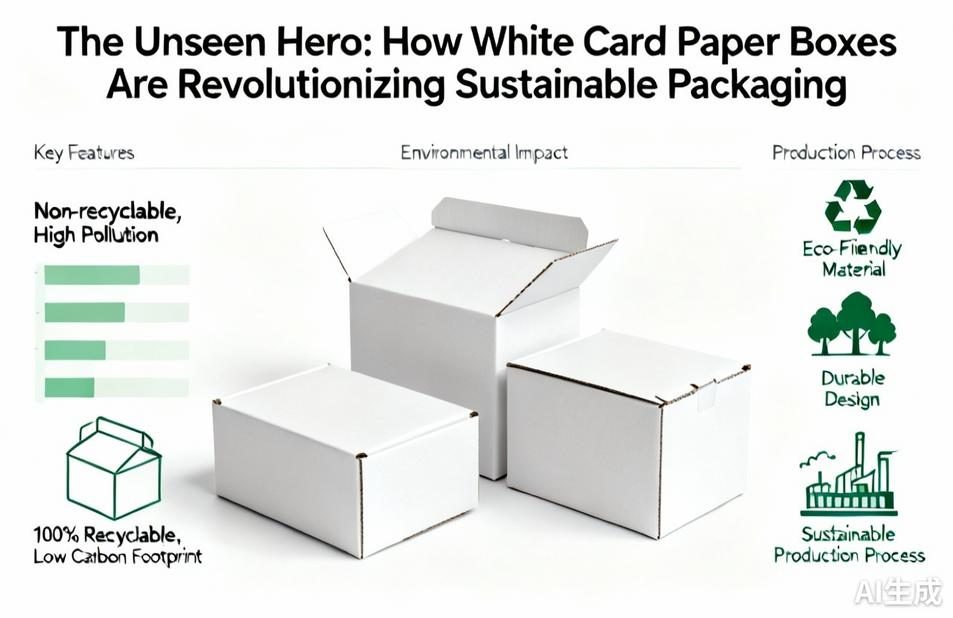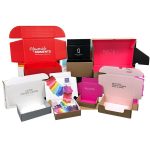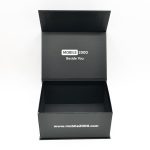
In a world increasingly conscious of environmental impact, the humble white card paper box has emerged as an unsung hero of sustainable packaging. These versatile containers, crafted from sturdy cardboard with a pristine white finish, represent more than just practical storage solutions—they embody a shift toward eco-friendly commerce without compromising on aesthetic appeal. From boutique retailers to global e-commerce giants, businesses are discovering that the simplicity of white card paper boxes carries profound implications for brand perception, customer experience, and planetary health.
The environmental advantages of white card paper boxes begin with their composition. Typically made from recycled materials and fully recyclable after use, these boxes form part of a circular economy that reduces waste and conserves resources. Unlike plastic alternatives that linger in landfills for centuries, paper boxes decompose naturally, leaving minimal environmental footprint. The bleaching process for the signature white finish has evolved significantly, with many manufacturers now using chlorine-free methods that prevent harmful dioxins from entering ecosystems. This commitment to clean production makes white card paper boxes a responsible choice for environmentally conscious brands.
Beyond sustainability, the blank canvas of a white card paper box offers unparalleled branding opportunities. The neutral background serves as the perfect foundation for logos, product information, and creative designs that capture brand identity. Luxury goods often utilize the crisp whiteness to convey purity and premium quality, while artisanal brands might add subtle textures or embossing to create tactile experiences. The psychological impact of white packaging shouldn’t be underestimated—it communicates cleanliness, simplicity, and modernity, values increasingly prized by contemporary consumers. This versatility allows businesses across industries to tailor the boxes to their specific messaging needs.
The functional benefits of white card paper boxes extend to their practical durability. Advanced manufacturing techniques have resulted in cardboard that withstands considerable weight and pressure, protecting contents during shipping and handling. The rigidity of these boxes ensures products arrive in pristine condition, reducing return rates and enhancing customer satisfaction. Furthermore, the light-reflective property of white surfaces helps prevent heat absorption, making these boxes ideal for temperature-sensitive items like cosmetics or gourmet foods. Their stackable nature optimizes storage space in warehouses and delivery vehicles, contributing to logistical efficiency and reduced carbon emissions from transportation.
In the retail landscape, unboxing experiences have become crucial marketing tools, and white card paper boxes excel in this arena. The gradual revelation of products against a clean white interior creates a sense of anticipation and luxury that customers frequently share on social media. This organic marketing extends brand reach far beyond the initial purchase. Studies show that well-designed packaging can increase perceived product value by up to 30%, making the investment in quality white card paper boxes financially justified. The boxes’ ability to be customized with inserts, compartments, and special openings allows brands to create unique, memorable interactions that foster customer loyalty.
As e-commerce continues to dominate consumer behavior, the role of packaging in the customer journey has never been more critical. White card paper boxes arrive at doorsteps as physical representations of brand values—their sustainable credentials resonating with the 73% of consumers who prefer eco-friendly packaging. The ease of disposal through recycling programs eliminates guilt associated with packaging waste, enhancing overall satisfaction. Smart brands are leveraging this by including recycling instructions on boxes, further strengthening their environmental commitment. The simplicity of white cardboard also facilitates efficient labeling and addressing, streamlining the shipping process for businesses of all sizes.
Looking toward the future, innovations in white card paper box technology continue to emerge. Water-resistant coatings now allow use with perishable items, while soy-based inks enable vibrant printing without toxic chemicals. Some manufacturers are integrating seed paper into their designs—boxes that can be planted to grow flowers or herbs after use. The development of stronger, lighter-weight cardboard reduces material usage while maintaining protection, and digital printing advances allow cost-effective small-batch customization for seasonal promotions or limited editions. These innovations ensure white card paper boxes remain at the forefront of packaging evolution.
Ultimately, the rise of white card paper boxes reflects a broader cultural shift toward mindful consumption. They represent a convergence of practicality, sustainability, and beauty that few packaging solutions can match. As consumers increasingly vote with their wallets for environmentally responsible options, and as brands seek to differentiate themselves in crowded markets, these simple white containers offer a powerful tool for building connection and trust. The white card paper box has transcended its utilitarian origins to become a statement—one that says a brand cares about quality, experience, and the planet we all share.




Leave a Message